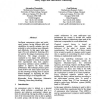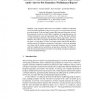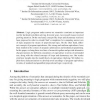936 search results - page 71 / 188 » The Logical Difference Problem for Description Logic Termino... |
EUSFLAT
2001
13 years 9 months ago
2001
Intelligent autonomous robots and multiagent systems, having different skills and capabilities for specific subtasks, have the potential to solve problems more efficiently and eff...
EDM
2009
13 years 5 months ago
2009
In this paper, we present a study of a large corpus of student logic exercises in which we explore the relationship between two distinct measures of difficulty: the proportion of s...
FUIN
2000
13 years 7 months ago
2000
We give algorithms to construct the least L-model for a given positive modal logic program P, where L can be one of the modal logics KD, T, KDB, B, KD4, S4, KD5, KD45, and S5. If L...
LPNMR
2007
Springer
2007
Springer
Alternative Characterizations for Program Equivalence under Answer-Set Semantics: Preliminary Report
14 years 2 months ago
Logic programs under answer-set semantics constitute an important tool for declarative problem solving. In recent years, two research issues received growing attention. On the one ...
FOIKS
2008
Springer
13 years 9 months ago
2008
Springer
Logic programs under answer-set semantics constitute an important tool for declarative problem solving. In recent years, two research issues received growing attention. On the one ...



